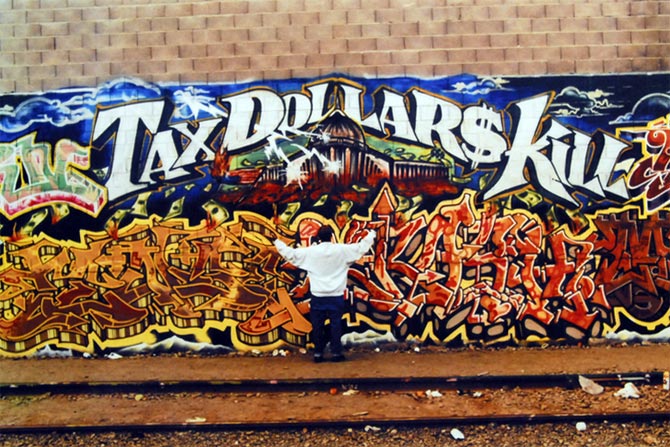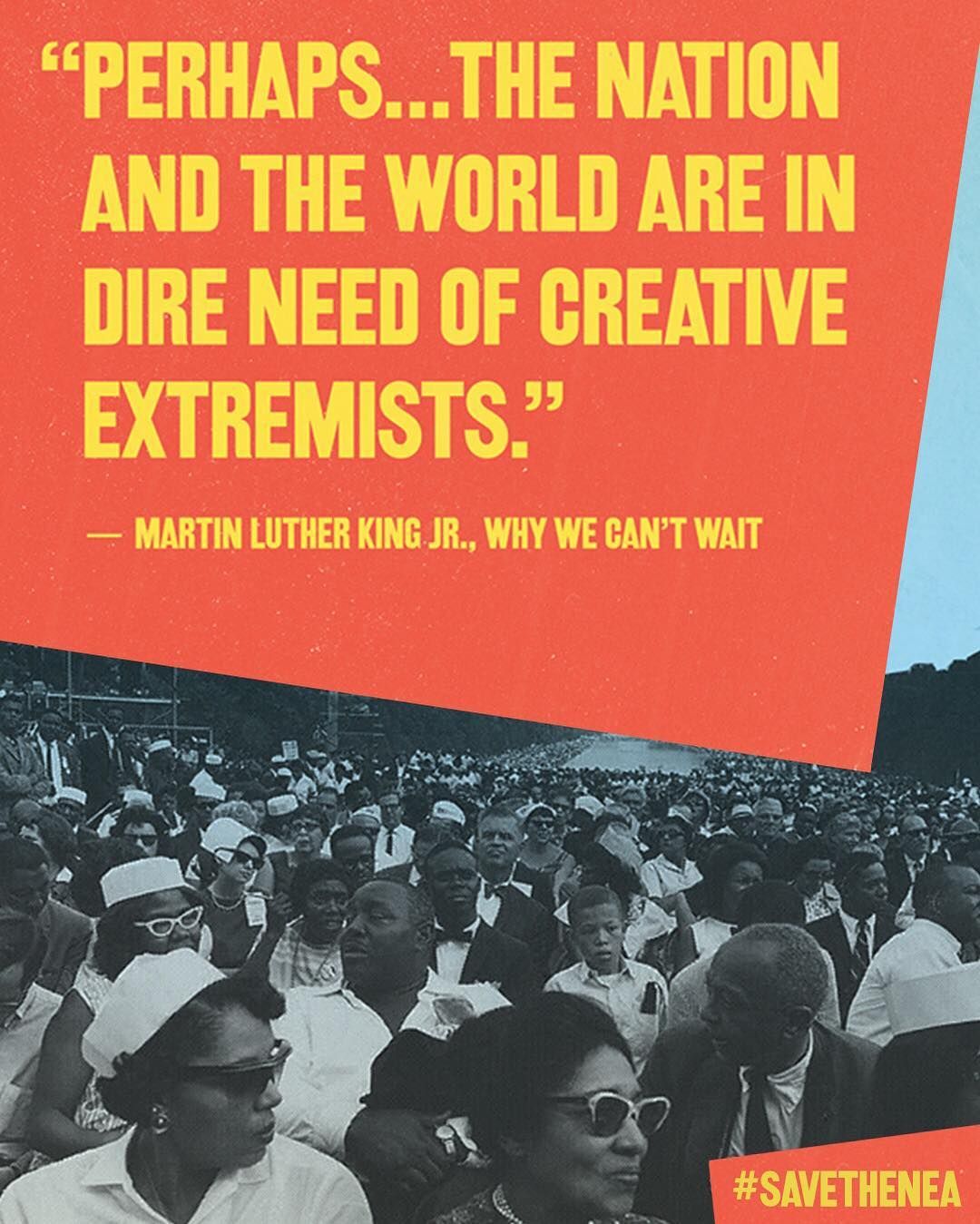Cover artwork by Lexx Valdez
Before I had my first email address, before cell phones were the requisite accessory for modern life, and long before MySpace seduced users with a boundless platform for self-promotion- the calling card of the late 20th century was the outgoing message on our answering machines. During the late 90’s I worked for Upward Bound at UC Berkeley and I can still hear Munyiga Lumumba’s booming voice speaking a powerful and cogent outgoing message when I called the office: “You’ve reached Upward Bound, where we value human lives over profit.” Over the past decade, I’ve supported teams to build frameworks that essentialize their work in order to capture their fundamental core values. I have yet to come across another message like Munyiga’s that can take us straight to depths of the current national conversation in a single sentence. It reminds us that it is our moral imperative to confront the historic and persistent pattern of demoting humanity in our modern economic system. The racist, sexist, and xenophobic institutions designed and sanctioned by those who have held the wealth and power in this country, have soiled our nation’s fabric with deep legacies of physical and psychological violence.
In the past year, scores of U.S. institutions (governmental, philanthropic, military, educational, law enforcement, health-care, etc.) publicly reckoned with their own genesis stories and were forced to confront their dark histories of brutality. I never dreamt this avalanche of acknowledgement would come in my lifetime. I never imagined we would witness these shameful admissions. I’m still astounded that we have arrived at a moment where we can envision another way forward because criminal culpability was recognized. Modern day economists have warned that institutions are only as viable as their ability to operate as systems of inclusion which rely on practices of accountability, compassion and love. How do we incentivize a splintered nation to work toward the collective good of all of its members? Where is the shared moral ground that we can stand upon? How do we build alternative economic models that no longer reward extractive business and publicly fund hegemonic institutions? What role do artists play in this conversation? Who can we look to as we craft a shared spiritual center for our nation? Who can help us understand how to transform institutions, and the exclusive systems embedded in these infrastructures?

Inspired by Dr. King’s call for creative extremists, I’m committed to lifting up the ongoing work and practices of artists who dare to imagine a future that contends with intersectional institutional oppression. James Baldwin wrote, “The role of the artist is exactly the same as the role of the lover. If I love you, I have to make you conscious of the things you don’t see.” Grassroots community organizers have fueled their work with this notion for decades. They have succeeded in calling people into leveraging our systems of power, allowing them the voice and agency to be self-determined. (In contrast, much has been written about the toxicity of call-out culture that depends on humiliation, reductive analysis, and polarizing paradigms.) In my heart lives a beloved cadre of artivists: actors, aerosol artists, painters, dancers, educators, writers, emcees, musicians, photographers, digital media makers, and thinkers who have built, practiced, and taught methods that depend on this kind of “centering” to drive our imaginations toward more just, equitable, and inclusive systems. I have unwavering faith in this creative class of people to build with policy makers, scientists, engineers, community organizers, architects, community planners, businessmen, entrepreneurs, and governmental agencies in order to re-imagine the time to come. We don’t need to wait for the U.S. government to set up a Department of Culture to support the creative economy and expand critical perspectives in this country. We shouldn’t stand by for philanthropists to catch on to the idea that we need artists as thought partners in all of our strategic conversations about building institutions that center BIPOC and LGBTQ+ epistimologoies. We can ask artists now how to help us design intergenerational accountability and reciprocity in our social programs. We can rely on artists to understand and create industries that drive equity and social benefit, instead of watching corporations promote their social impact efforts once their coffers are full.

Artists often rely on non-linear processes to create their most responsive and relevant work. They can turn things inside out and look at them from new perspectives in order to break free from conditioned and problematic paradigms. This is essential to the artistic process. This is essential for all of us right now. The stress and paralysis caused by the Coronavirus pandemic is akin to the place an artist finds themselves when trying to innovate a method or piece of work. But instead of the gears of institutional machinery coming to a grinding halt, artists can find a new movement, a different color, an unexplored composition, or a surprising innovation in their process to release the tension at a calcified impasse.
The most effective artist poses more questions and is not fixated on singular answers. Our systemic problems are complex and textured. Institutions created monolithic goals and one-dimensional measures of success. It will take flexibility to arrive at new paradigms that elevate our consciousness. It will take plasticity to learn how to defund, deconstruct, and decommission intersectional oppression. Many artists are trained to work at the nexus of different disciplines. Their ability to translate ideas across mediums is indispensable in the work that lies ahead. Artists do not privilege a singular kind of language or have an unhealthy reliance on quantitative data. This year we watched institutions topple as the self-righteous ground shifted beneath them. Dichotomous thinking is the end to all creativity. Artists understand that there is more than one way to approach any problem and we need that skill to remake our social blueprint.
This year I have seen some of the most exciting cross-sector arts-based innovations emerge. I’ve compiled a short but powerful list of inspirational reading below to be shared in hopes that their models are replicated widely. We can no longer let institutions or institutional culture limit our imagination for what is possible in our world. How do we champion groups that have been left out? What would it look like if we expected artists to be thought leaders at the center of our most complicated social issues? Call upon your creative extremists to help you push through your most rigid thinking. And if you don’t know any, holler at me. Let’s connect.
Resources and Inspiration
A Call for a Cultural New Deal for Cultural and Racial Justice
The Arts Are in Crisis. Here’s How Biden Can Help
Can Artists Find a Silver Lining in the Cloud of COVID-19? Peter Sellars is Looking
Creative Economies and Economic Recovery – Case Studies
The Origins of Power, Prosperity, and Poverty: Why Nations Fail
